Craft Winning Speeches with HYPT
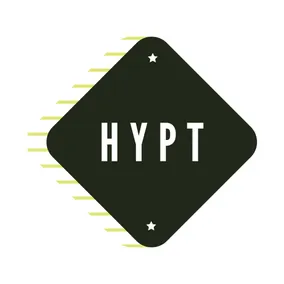
HYPT is the perfect way to hype up your team, for the right moment, at the right time.
This Is Your Moment
Imagine this scenario: You're the leader of a team, gathered in a huddle during a crucial timeout in the biggest game your team has ever played. All eyes are fixed on you, waiting for your words to rally them. It's your moment to shine, your opportunity to ignite the fire within your team.
But as you search for the right words to inspire them, your mind draws a blank. Not a single line from a sports movie, not a snippet of wisdom from your old P.E. teacher, not even the sage advice of Yoda comes to mind.
You’ve got nothing.
But what if the key to rising to the occasion was just a few clicks away? What if you could craft the perfect speech, tailored to the moment, to energize your team in ways you never thought possible?
That's precisely the challenge we tackled over a whirlwind 48 hours (more or less) during our latest Pointless Palooza hackathon. Pointless Palooza, an event by Pointless Corp - which is neither pointless or a corporation - is Viget's way of fostering continued learning and exploration beyond our client projects. It's a chance to stretch our skillsets, maybe even switch roles for a couple of days, all in the pursuit of building something new.
So when Brian Williams pitched the idea for an app that assists in composing hype speeches for sports, Noah Over, Solomon Hawk, Brian DiChiara, Aubrey Lear, and Steven Hascher jumped on board to turn it into reality - no hype speech needed. At least not yet…
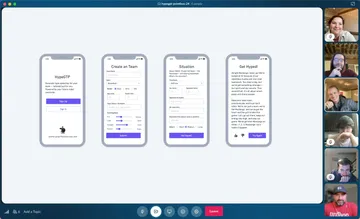
Time to get HYPT
Let us be the first to introduce you to HYPT (https://veryhypt.com), a speech generator that lets you craft the perfect way to hype up your team.
With HYPT, there are endless possibilities waiting for you to inspire, motivate, and exhilarate your team. You're not just delivering any old pep talk—you're creating a tailored experience that resonates deeply. Whether it's incorporating your team's name, setting the stage with a heart-pounding scenario, considering the unique dynamics of your players' age group, or even infusing your distinctive coaching style—HYPT has you covered.
The result? A speech so inspiring, so tailored, so laser-focused, it not only fires up your team, but keeps them pushing for the win!
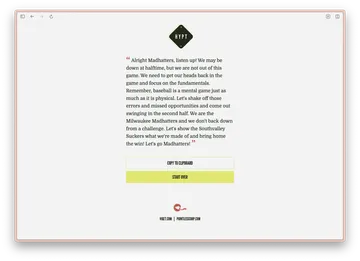
Crafting the Inputs
Text generation models, such as OpenAI’s GPT-4, are trained to generate text outputs based on the provided inputs. If you have ever used ChatGPT or experimented with other text generation tools, you know that achieving the desired result can sometimes be challenging.
That’s where prompt engineering transitions from the bench to the playing field. Prompt engineering involves designing the inputs to a text generation model in a way that encourages it to produce outputs that better align with your specific use case. These inputs, known as prompts, offer additional context or instructions to influence the behavior of the language model, steering it towards generating useful and relevant responses.
For HYPT, we aimed to delve deeper beyond the surface level and understand the intricacies of the thought process and strategies involved in creating effective prompts that consistently deliver expected results. Anyone can input data into a model, but refining the output—that's the real challenge we sought to tackle.
Some specific considerations our team had to address when approaching prompt engineering included:
- Understanding the nuances of the model being utilized, as different models may respond differently to identical prompts.
- Striking a balance in the specificity of the prompts to achieve desired outputs, without overly restricting diversity in the responses.
- Ensuring that our model receives the correct inputs in a logically structured format.
- Iterating on the prompts and conducting numerous tests to fine-tune the optimal combination.
V1
To kick off our project, we opted for a straightforward approach: getting a basic end-to-end experience operational. We devised a simple form to collect fundamental user inputs, which would then shape our prompt.
Baseline Form
- What is the sport? (select)
- Baseball/Softball
- Basketball
- Soccer
- Football
- What is the situation? (select)
- A close game
- A game winning play
- Starting a comeback
Using these inputs, we crafted a concise prompt to feed into the API:
You are a coach delivering a motivational speech to your [sport] team to rally the players around [situation]. Craft a compelling and inspiring speech that rallies your players to give their best effort to strive for a win. Consider the specifics of gameplay for [sport] and the [situation].
This baseline form and prompt expedited our development process by allowing us to swiftly build a working prototype. It validated our technical setup, and allowed us to get a better idea of the cost estimation for our OpenAI usage. Most importantly, it provided us with a solid foundation for iteration and improvement.
V2
Now that we have the ability to create some HYPT speeches to keep the team motivated, we turned our focus on prompt engineering a second version.
To facilitate this process, we transitioned to using a Google Sheet, enabling rapid iteration on a multitude of potential inputs. This allowed us to generate a diverse array of random prompts swiftly, which we could then feed into OpenAI’s playground for testing. Surprisingly, this approach proved to be an efficient method for the team to explore numerous input variations and refine our prompt structure effectively.
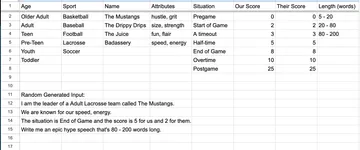
Based on the testing in the OpenAI playground, we created an updated model for our speech parameters to be used in the next version of our user facing form.
model SpeechCreateParams {
team_name: string;
sport: Sport;
situation: Situation;
age_level: AgeLevel;
team_values: string;
fun_or_serious?: FunOrSerious;
loud_or_quiet?: LoudOrQuiet;
energetic_or_calm?: EnergeticOrCalm;
positive_or_angry?: PositiveOrAngry;
timeframe: Timeframe;
our_score?: integer;
their_score?: integer;
opponent_strengths?: string;
weakness_callout?: string;
player_callout?: string;
speech_length: SpeechLength;
}With the variable inputs finalized, we proceeded to refine our spreadsheet test. Our newly appointed Prompt Engineers (some of us are seriously contemplating adding this to our resume skills section) meticulously outlined the prompt, specifying the placement of variables based on the form inputs. Then, our team's developers transformed this prompt into functional code.
I am the leader of a #{@speech_params[:age_level]} #{@speech_params[:sport]} team called #{@speech_params[:team_name]}.
We are known for our #{@speech_params[:team_values]}.
It is #{@speech_params[:timeframe]}.
The situation is #{@speech_params[:situation]} and the score is #{@speech_params[:our_score]} for us and #{@speech_params[:their_score]} for them.
// IF opponent_strengths is not null
The opponent's main strengths are #{@speech_params[:opponent_strengths]}.
// IF weakness_callout is not null
Our main weakness is #{@speech_params[:weakness_callout]}.
Write me a hype speech that's #{@speech_params[:speech_length]} words long and matches the sentiment of the #{@speech_params[:situation]}.
// IF any of the following are present: fun_or_serious, loud_or_quiet, energetic_or_calm, positive_or_angry
Please use the following feelings to help craft the speech: #{@speech_params[:fun_or_serious]} #{@speech_params[:loud_or_quiet]} #{@speech_params[:energetic_or_calm]} #{@speech_params[:positive_or_angry]}.
// IF player_callout is not null
We could especially use leadership and a big play from #{@speech_params[:player_callout]}.And this is where the #hypegpt-pointless Slack channel, our main collaboration/hack/meeting space, really started to light up. Armed with the power to create speech after speech we did what anyone would do, we made a LOT of hype speeches.
The best was when Solomon decided to change the personality to “A teenager who speaks in emojis”.

This is also the perfect example of why Pointless Palooza and building for the sake of learning and being creative, is so. much. fun.
V3
Now that our prompt was fine-tuned and the application was functioning from end to end, it was time to infuse some branding into the frontend. We opted for a simple, clean UI design, drawing inspiration from the diverse playing surfaces of various sports.
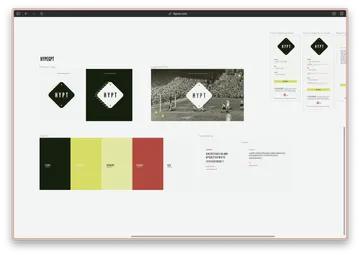
So What Gets You HYPT?
For us, it’s knowing that in a couple of days, we were able to put together a fun project that also allowed us to gain a better understanding of the constantly expanding world of text generative models. We are continuing to see applications for tools like OpenAI’s text generation models in the work we do for our clients. While these opportunities are not quite in the context of this little project, the approach and methodologies used to craft HYPT are not far removed from tackling other projects with this technology.
So what will be your next moment lead? Whenever it is, use HYPT at veryhypt.com to hype up your team.
